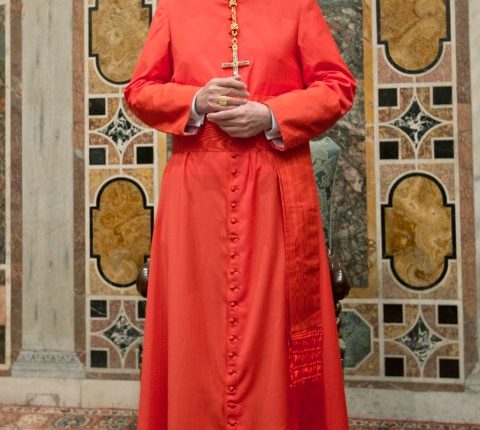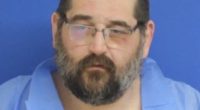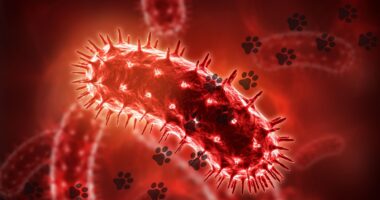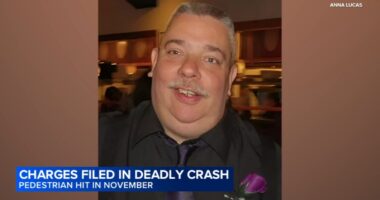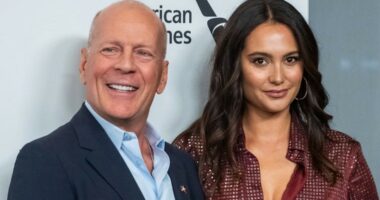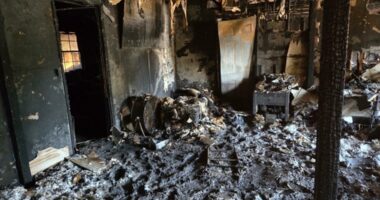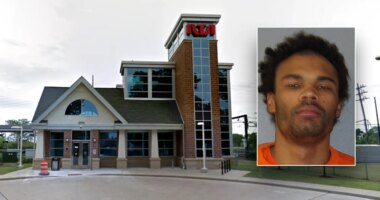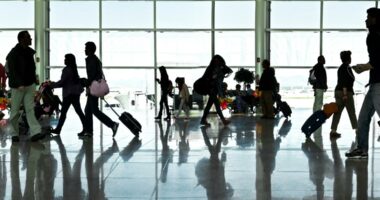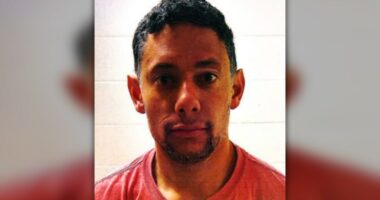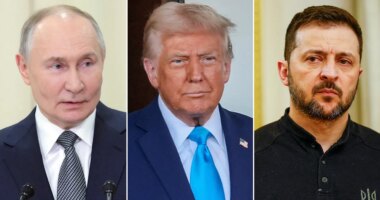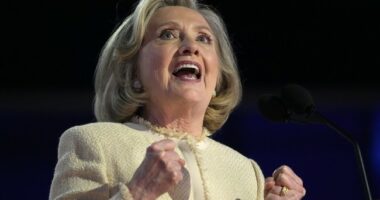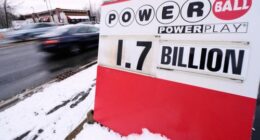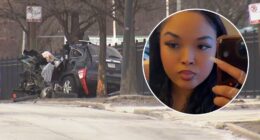Share this @internewscast.com

The United States is home to 10 of the 133 cardinals with the privilege to vote for the next pope. This number is surpassed only by Italy, which has 17 electors who will meet on Wednesday for the Vatican conclave to select a successor to Pope Francis.
Among the American electors, only four actively serve as archbishops within the U.S.: Timothy Dolan from New York, Blase Cupich from Chicago, Joseph Tobin from Newark, New Jersey, and Robert McElroy from Washington. Two have retired from their archbishop roles: Daniel DiNardo from Galveston-Houston and Wilton Gregory from Washington.
The other four have had long Vatican service: Robert Prevost, James Michael Harvey, Raymond Burke and Kevin Farrell.
Profiles of the cardinal electors:
Raymond Burke
At 76, Burke is a strong advocate for Catholic tradition and has frequently disagreed with Francis, who is more inclined towards reform. Originally from Wisconsin, Burke served as a bishop there before taking charge as the archbishop of St. Louis from 2004 to 2008. Pope Benedict XVI elevated him to cardinal status in 2010 after appointing him as prefect of the Apostolic Signatura, the Vatican’s high court. In 2014, Francis removed him from this position and assigned him the role of cardinal patron of the Knights of Malta, a distinguished but limited post. Burke and Francis also disagreed during a governance crisis within the chivalric order, leading to his marginalization by Francis. Burke has been vocal in his belief that Catholic politicians who support abortion rights should not partake in Communion.
Blase Cupich
Cupich, 76, archbishop of Chicago, was a close adviser to Francis and served on several Vatican committees. He’s considered a moderate, having balanced upholding conservative Catholic teachings on social issues like same-sex marriage and abortion with advocacy for compassionate responses to the affected communities. Cupich, who inherited clergy sex abuse crises in dioceses he led, helped push reforms to combat the problem. Born in Omaha, Nebraska, he was ordained in 1975 and appointed by Pope John Paul II in 1998 as bishop of Rapid City, South Dakota. Benedict transferred him in 2010 to Spokane, Washington. In 2014, Francis — in his first major U.S. appointment as pope — made him archbishop of Chicago, and then cardinal in 2016.
Daniel DiNardo
DiNardo, 75, retired this year as archbishop of Galveston-Houston — the fifth-largest U.S. diocese, with 1.7 million Catholics. DiNardo was ordained in his native Diocese of Pittsburgh in 1977. He earned degrees from Catholic universities in Washington and Rome and worked in the Vatican office overseeing appointments of bishops. He served as bishop of Sioux City, Iowa, before moving to Houston in 2004. DiNardo was named a cardinal in 2007 by Benedict. He was president of the U.S. Conference of Catholic Bishops from 2016 to 2019 — a tumultuous time when the USCCB faced allegations of coverups of sexual abuse by priests. DiNardo shared Francis’ strong support for migrants while defending traditional church teachings on sexuality.
Timothy Dolan
Dolan, 75, has been archbishop of New York since 2009. He previously served nearly seven years as archbishop of Milwaukee. He grew up in Missouri, where he was ordained in 1976. Among other duties, Dolan was chairman of Catholic Relief Services and served a term as president of the USCCB. In 2012, Benedict appointed him a cardinal. Dolan is widely viewed as conservative, writing a 2018 Wall Street Journal column headlined “The Democrats Abandon Catholics.” Yet in 2023, he wrote a letter of welcome to a conference at Fordham University celebrating outreach programs aimed at LGBTQ+ Catholics.
Kevin Farrell
Farrell, 77, was selected by Francis in 2019 as the camerlengo, the Vatican official who runs the Holy See after the death of a pope and before the election of another. Farrell was born in Dublin in 1947, entered the Legionaries of Christ religious order in 1966 and was ordained a priest in 1978. He left six years later — before revelations that its founder was a pedophile — and became a priest in the Washington Archdiocese. He worked in several parishes and helped manage the archdiocese’s finances. He became auxiliary bishop of Washington in 2001 and served under ex-Cardinal Theodore McCarrick before becoming bishop of Dallas in 2007.
Wilton Gregory
Francis tapped Gregory to lead the Archdiocese of Washington in 2019 and made him the first Black cardinal from the U.S. in 2020. Gregory, 77, retired this year from leading the prominent archdiocese, which he shepherded through significant turmoil. Its two previous leaders, McCarrick and Cardinal Donald Wuerl, were implicated in a new wave of the clergy sex abuse scandal. Gregory has supported social justice and solidarity with immigrants. He drew notice for his relatively inclusive approach for LGBTQ+ Catholics. He told an LGBTQ+ group in January: “I apologize for my own lack of courage to bring healing and hope, and I ask forgiveness.” Gregory was born in Chicago and ordained there in 1973, serving as auxiliary bishop beginning in 1983. After 11 years as bishop in Belleville, Illinois, he was appointed in 2004 by John Paul II to be archbishop of Atlanta.
James Michael Harvey
Harvey, 76, has pursued a long career at the Vatican, initially as a diplomat and more recently as manager of the papal household. Born in Milwaukee, he studied at seminary there before completing his formation in Rome. He was ordained by Pope Paul VI in Rome in 1975 and entered the Holy See’s diplomatic service in 1980. John Paul II appointed Harvey prefect of the Papal Household in 1998, managing the pope’s official activities. Benedict made him a cardinal in 2012.
Robert McElroy
Francis named McElroy archbishop of Washington in January, tapping one of his most progressive allies to head the Catholic Church in the U.S. capital at the start of President Donald Trump’s second term. McElroy criticized Trump’s threats of mass deportations of immigrants as “incompatible with Catholic doctrine.” Francis appointed McElroy bishop of San Diego in 2015 and elevated him to cardinal in 2022. McElroy, 71, was one of a few U.S. bishops assailing a campaign to exclude Catholic politicians who support abortion rights from Communion. He has also expressed support for greater LGBTQ+ inclusion in the church. A native San Franciscan, McElroy received a bachelor’s degree from Harvard, a master’s degree and doctorate from Stanford, and a doctorate from the Gregorian University in Rome.
Robert Francis Prevost
The Chicago-born Prevost, 69, is prefect of the Vatican’s powerful dicastery for bishops, in charge of vetting nominations for bishops around the world. He has extensive experience in Peru, first as a missionary and then archbishop. Francis had an eye on him for years, sending him to run the diocese of Chiclayo, Peru, in 2014. He held that position until 2023, when Francis brought him to Rome for his current role.
Joseph Tobin
Tobin, 72, is archbishop of Newark, New Jersey, and a veteran of the Vatican bureaucracy who speaks five languages. The Detroit native was ordained in 1978 and earned master’s degrees in religious education and divinity at Mount St. Alphonsus Seminary in Esopus, New York. Benedict appointed Tobin in 2010 as secretary of the Vatican’s office overseeing religious orders. Tobin reportedly ruffled feathers by seeking to mend its frayed ties with U.S. nuns facing complaints they had become too liberal. Benedict appointed Tobin archbishop of Indianapolis in 2012. Francis made him cardinal and archbishop of Newark in 2016. Tobin welcomed Syrian refugees to Indiana despite opposition from then-Gov. Mike Pence. He has a welcoming stance toward LGBTQ+ people.
___
Seven U.S. cardinals, due to being 80 or older, are not conclave electors: Edwin O’Brien, Roger Mahony, Adam Maida, Seán Patrick O’Malley, Justin Rigali, James Francis Stafford, Donald Wuerl.
___
AP journalists Holly Meyer and Tiffany Stanley contributed.
___
Associated Press religion coverage receives support through the AP’s collaboration with The Conversation US, with funding from Lilly Endowment Inc. The AP is solely responsible for this content.
